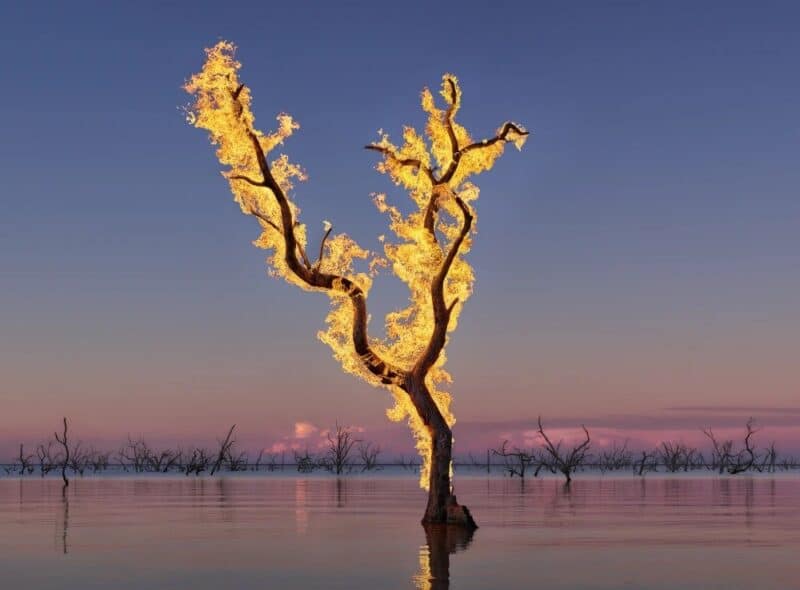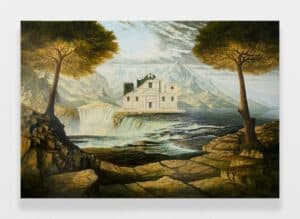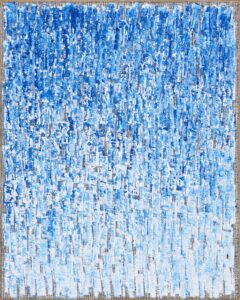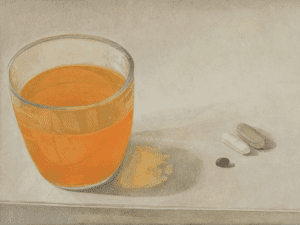FAD took some time to talk to one of art’s brightest stars. The Cuban born artist Victor Payares who currently lives in London.

Mi Toronja Installation View
Tell us about your first encounter with Art?
Creativity was always at hand in the household that I grew up in. I was very perceptive as a child and in the 90’s Havana had a vast abundance of visual, musical and literary art movements. Being open to those elements was really encouraging. I really enjoyed being in the presence of all of these artistic passages taking place around me constantly, whether it was my grandmother teaching ballet at our home or going with my father to the Cuban Institute of Cinematographic Art and Industry (ICAIC). There was always art interchange and this era really marked me.

Timid Squid (Peau d’Orange)?2016?Acrylic, Modeling Paste, Found Cables, Woven Label Orange peel, Snus, Coffee Stirrers, Buttons on Canvas?167x121cm
What we find exciting about painting is that it is constantly being reevaluated and recontextualized to reflect the lens of our time. We are fascinated by texture and how subject determines the action of a stroke or mark. What is it about painting that moves you?
Painting for me is ambulant, literally and symbolically. Paint is flexible and the medium lends itself to infinite partnerships; this ability is unique to painting and is one of the causes that move me. The recontextualizing capacity of paint as a pigment based material, and as a vehicle for mark making exemplifies a kind of migratorial poetics that is special to me, hence I also draw stimulation from this.
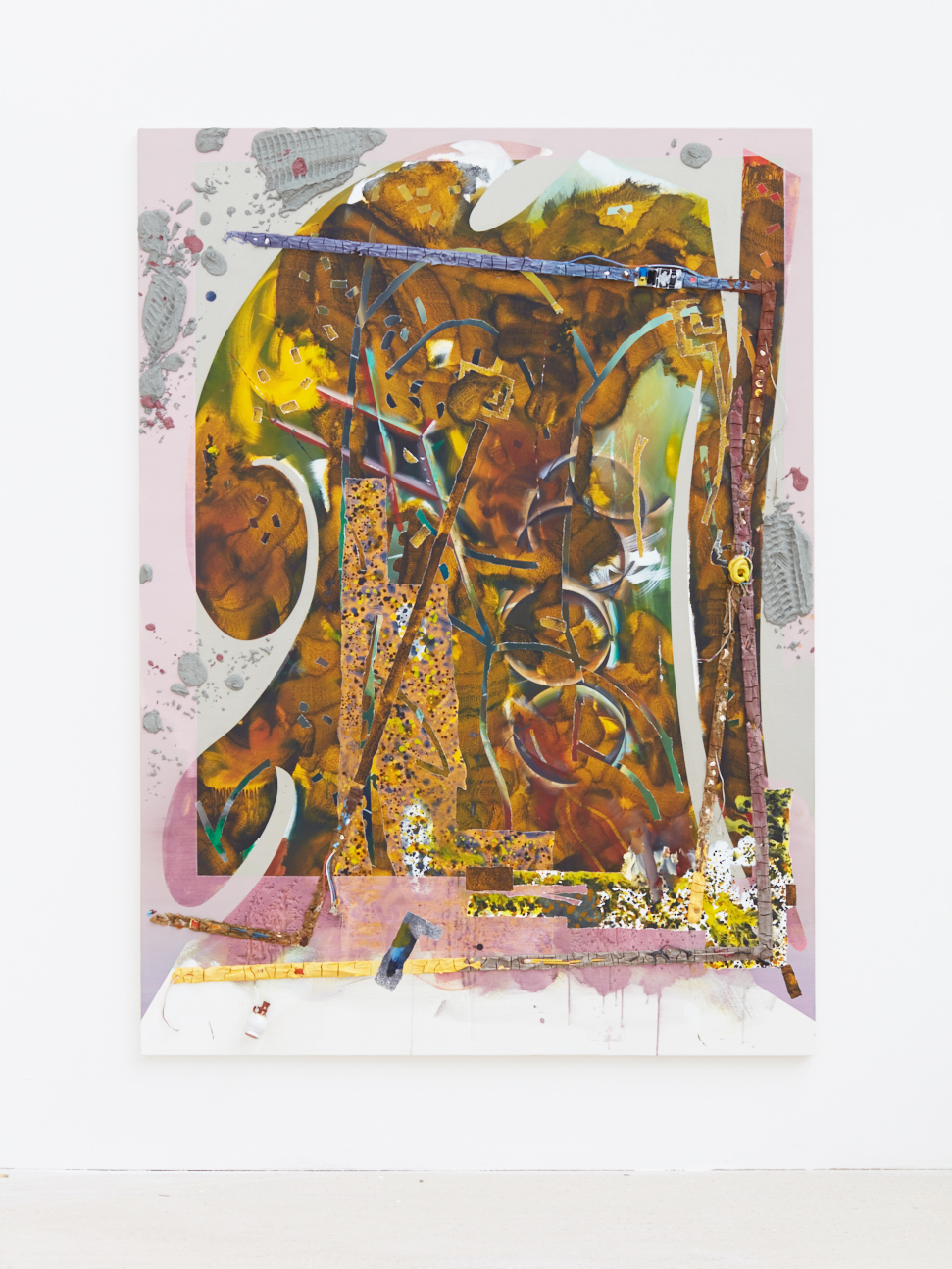
Warm Sugarcane Juice?2016?Acrylic, Modeling Paste, Found Cable, Trampled Glasses, Pencil, Buttons, Orange Peel, Pottery, Fake Diamond Ring, Cowry Shells, Woven Label on Canvas?167x121cm
What happens in the studio for you to be able to push yourself and have the energy to go after the painting you want to make?
I like to treat memory as object and source for painting so really for me the studio is about things that have already happened. The studio becomes a space where I can amplify legacies I find significant to who I am and my place in the world.
Do you feel your Cuban roots inform your practice?
Cuba has definitely informed everything that I do, especially in aesthetic choices, not so much politically. My paintings are always titled in ode to tropical environments as a way of showing my admiration for the tropics, and I think that is evident in the work. I want to soak everything I do with a bit of Cuban flavour. Also, having spent my childhood in an island dominated by its scorched climate must have had an effect on my choice of colour.
How would you describe your work to somebody who had never seen it?
I call my paintings grapefruits, because there’s more juice than meets the eye. Besides that I would also describe them as warped baroque in partnership with my surroundings.
We are curious, have you had any recurring dreams throughout your life?
Not really, not anymore, that stopped when I was like 13. Almost every night of my youth I dreamt that I was at the toilet before actually waking up. I hated that because I could never have sleepovers.
We came to the conclusion that your art is like great music in the sense that there’s spontaneous compositions built on complex rhythmic structures. Are you influenced by music and if so what artists or genre because these paintings are all singing and dancing?
Thank you, that is the best thing I have ever heard. I listen to all types of music depending on time of day and mood. Nevertheless I embark the act of painting, which is a double movement, not one: something is being painted as I am painting that thing; as a display of something similar to a warped baroquian choreography – and not a composition, because it is much more physical and theatrical. There are a lot of exaggerated motions, half circle motifs and implications that can be associated to the rhetorical qualities of the circulo mezo forms of baroque music.
One of my recent painting discoveries from art history is an artist called Yamashita Kikuji. A Japanese surrealist painter born in 1919, as a young man he travelled through Europe and was introduced to the work of Max Ernst and Salvador Dali.
Tell me a painter from the past you have either discovered or happened to be looking at that informs your practice.
Wifredo Lam, hands down.
Some People say that universities and art schools don’t focus enough on the fundamentals of drawing and painting anymore, that students graduate without strong skills. Others feel that the emphasis on art theory, art history and critical thinking is more desirable. What are your thoughts on your experience at the RCA ?
I don’t think people should go to grad school to learn how to draw. The first year at RCA For me has been an experience that can only be appreciated in retrospect. Being in the company of my colleagues and tutors has encouraged me enormously – I would not have taken half the risks I have taken elsewhere.
Tell me about those Sculptures you produced at the Lychée One space because there pretty radical ?
The scrap metal sculpture in a way is a moderator to the narrative that concerns the paintings. It’s a more literal portrayal of desire and transformation. I thought it was important for the exhibition to also contain a ‘subject’ plus I wanted to open up the conversation between object and subject. The sculpture is an allegorical body I wanted contra posted against the ‘objects’ of my memory. So in that way the sculpture grew out of the desire to amplify the legacy of my childhood.
Basically in a very elemental and materialist form, variation produces change and evolution. Therefore, gesturally speaking, in order to want to become something you need variation, that’s why I chose to make it out of many different metal parts.
What was the last book you picked up and enjoyed ?
Aunt Julia and the Scriptwriter by Mario Vargas Llosa.
Do you collect art ? What was the last piece you brought or traded with another artist ?
I trade a little bit. I recently hung a Justin Fitzpatrick along a Margaux Valengin in my room. They compliment each other wonderfully.
What’s the future for Victor Payares ?
Rice and beans.
More: www.victorpayares.net

Guava Jelly on Crackers?2015?Acrylic on Canvas?182x182cm

Mi Toronja Installation View

Mi Toronja Installation View

Mi Toronja Installation View

